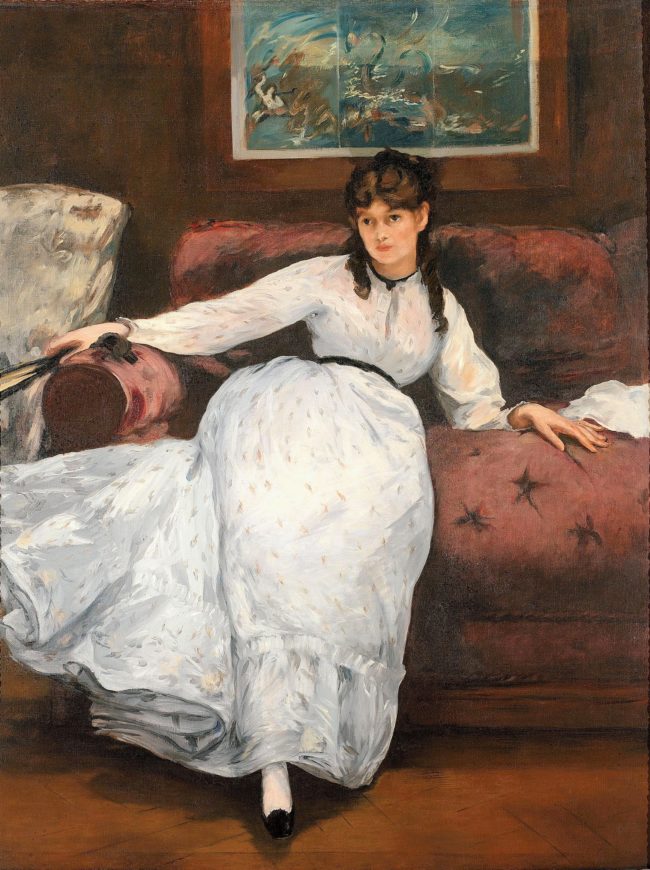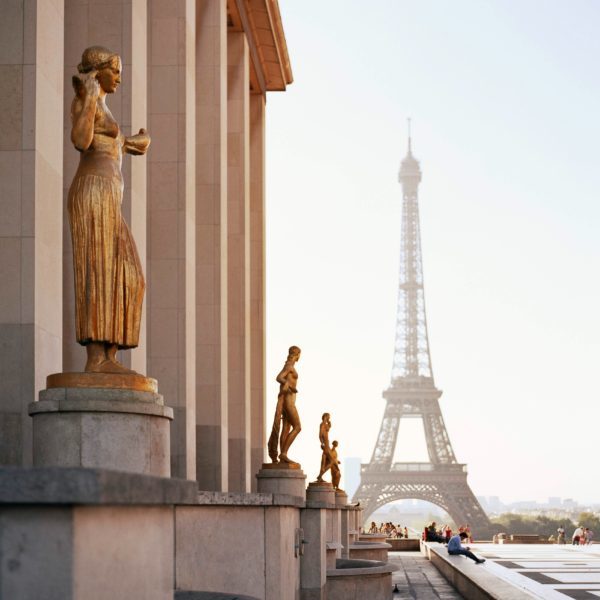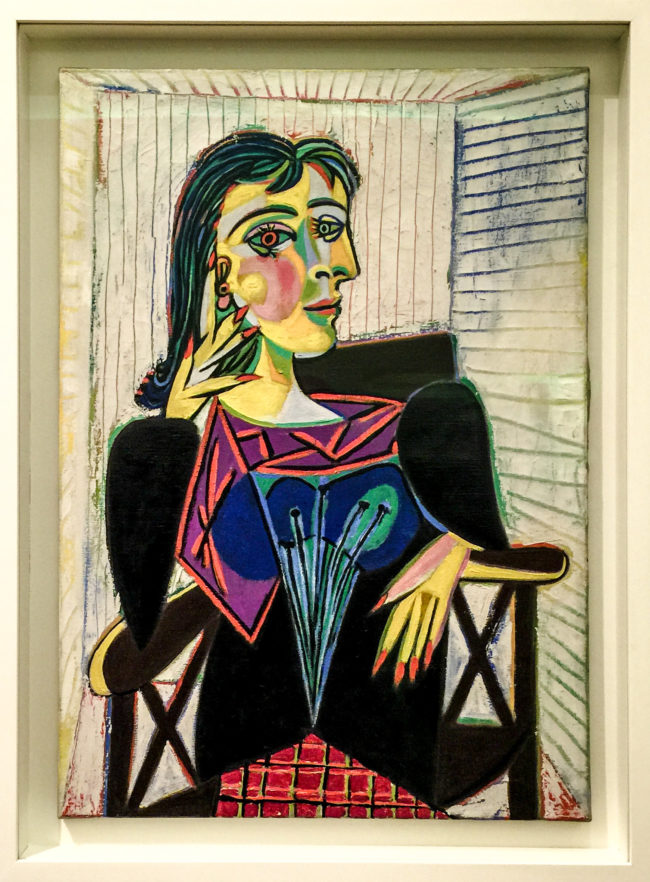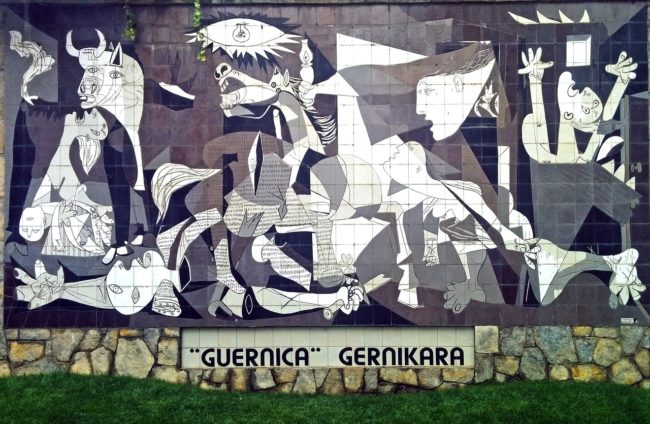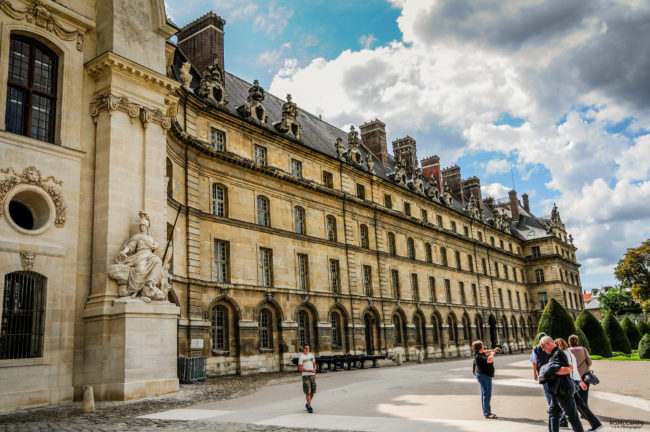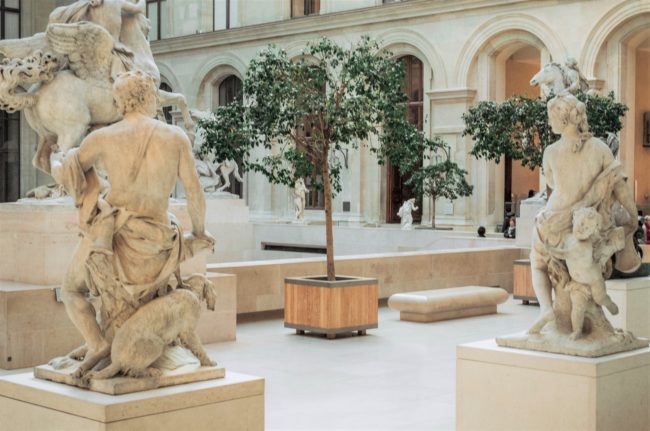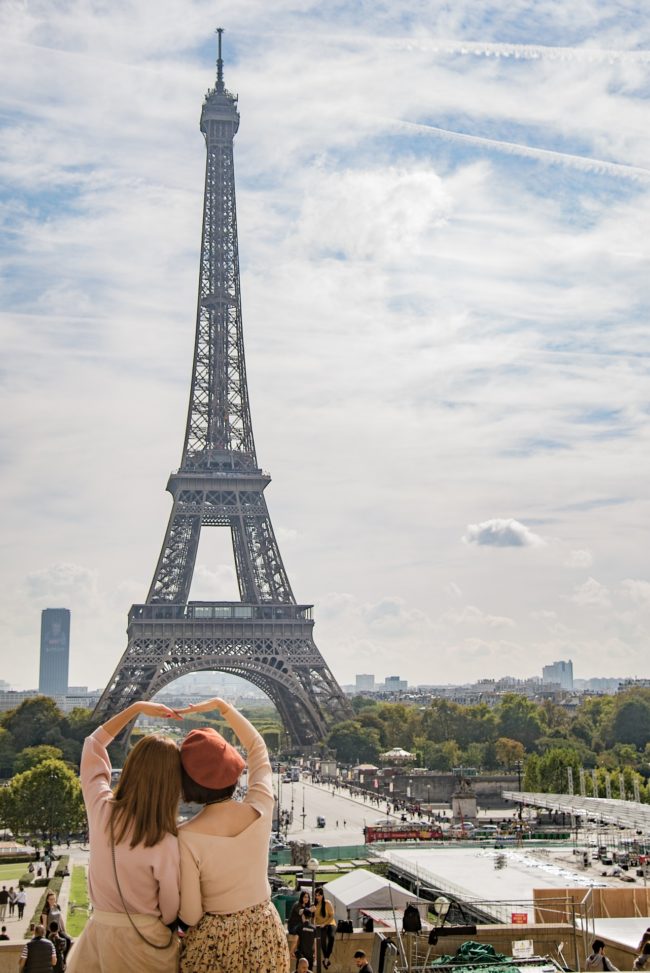Summer Art Exhibitions in Paris: What to See in the City
- SUBSCRIBE
- ALREADY SUBSCRIBED?
BECOME A BONJOUR PARIS MEMBER
Gain full access to our collection of over 5,000 articles and bring the City of Light into your life. Just 60 USD per year.
Find out why you should become a member here.
Sign in
Fill in your credentials below.
It is summer in Paris and it is coming in with a vengeance. One great way to escape the heat is to spend a day at one of the many museums in Paris. Some are air-conditioned and a few even have the vents in the floors (which makes for a nice little cooling break when you stand over them). While the heat from the crowds will still rival even the best air conditioner, it is still a great way to find relief and take in amazing art at the same time. There are some fantastic exhibitions taking place this summer.
One of the season’s most anticipated exhibits is one dedicated to Berthe Morisot, one of the only women painters of the French Impressionist movement. With her dark locks and stunning gaze, she was the perfect model for Édouard Manet and would model for some of his pieces. However, she became an artist in her own right, creating paintings that showed everyday family life– forging her own path in the male dominated Impressionists.
As a young girl, Berthe and her sister Edma would visit the Louvre as young art students and spend their day copying paintings. Here they would also meet the great painters of the day, including Manet. Artist Henri Fantin-Latour took his friend Édouard Manet one day to the Louvre to meet Morisot who was copying a Rubens painting; it would be the start of a very long friendship. Following Manet’s shocking of the Parisian Salon with Olympia and Déjeuner sur l’herbe, he was looking for a new model, and Berthe would have everything he wanted. In 1868, Manet would paint The Balcony for which Berthe would pose after much apprehension. Being a model for an artist was not the profession for a woman of society in Paris at the time.
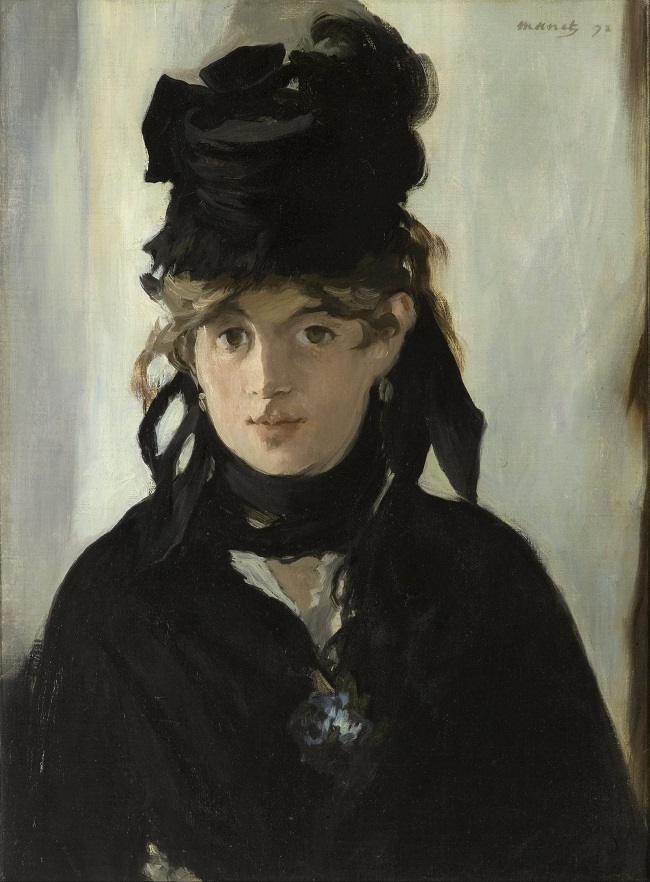
Édouard Manet, Berthe Morisot with a Bouquet of Violets (in mourning for her father), 1872, Musée d’Orsay © Public domain
Continuing to work with Manet for six years, he would capture her many times including his hauntingly beautiful painting, Berthe Morisot with a Bouquet of Violets that can be seen in the Musée d’Orsay. Theirs was a relationship built on great respect and love between two artists. In 1874, she would marry Édouard’s brother, Eugène Manet– a marriage that would give her the time to focus on her art. She painted the simple moments of a woman’s everyday life and those between a mother and child often outside under the trees or in an opened field. Her soft inviting images rivaled that of many of the men of the Impressionist movement.
The exhibition of the Musée d’Orsay on view until 22 September is the first of its kind in Paris since the 1941 expo dedicated to Morisot. The exhibition includes pieces gathered from private collections, many of which have never been on view in France, alongside works gathered from many Paris museums. The granddaughter of Rococo artists Jean-Honoré Fragonard was fiercely independent for the day and through this exhibit, you will see how she broke the glass ceiling of the male dominated profession.
To discover more of Berthe Morisot, visit the Musée Marmottan-Monet where you will find an entire room dedicated to her sketches, photos and paintings, including Manet’s Portrait of Berthe Morisot Reclining. The museum itself is a treasure and a must for any Impressionist lover; after all it holds the painting that named the movement.
Also open in Paris until 21 July at the Musée Maillol is the collection of Emil Buhrle that includes many Impressionist and Post-Impressionist paintings including art by Manet, Pissaro, Monet, Degas, Sisley, Renoir, Van Gogh, Toulouse-Lautrec and Cézanne. This will be the last time the collection is seen in Paris before it moves to its permanent location in Zurich; do not miss it.
The first half of the 19th century in Paris was dominated by Romanticism– sweeping through the canvas, sheet music and in the pages of some of the most beloved French names. The Petit Palais and the Musée de la Vie Romantique are holding a joint exhibition focusing on the years following the fall of Napoleon in 1815 to 1848.
The Palais des Tuileries may be nothing more than a memory today, but during these years, it was the residence of the Head of State and the site of the most glamorous parties. The Palais that was burned down is brought back to life in paintings and through the interior recreated from pieces that belonged to one of its most beloved figures, the Duchesse de Berry. If there is one thing that springs to mind when you think of the Romantique movement, it is the art by Eugène Delacroix. Along with fellow artists Théodore Géricault, Chassériau and Ingres, their grand paintings of scenes from history and from the pages of the great poets using color and light would have the Salon talking and inspiring artist for generations to come. In the middle of the Romantic Era, one author stood out above the rest, Victor Hugo. Featuring a hunchback that fell in love with a gypsy at Notre Dame de Paris, his 1831 book gave new life to the cathedral that had fallen in disrepair. The love story would reignite a fascination of the Middle ages, Gothic architecture and old Paris. His book became a bestseller again in 2019 following the fire at Notre Dame. Victor Hugo continues to spark interest through Esmeralda and Quasimodo all these years later.
The exhibition continues at the Musée de la Vie Romantique, the secluded museum that was once the home of Dutch artist Ary Scheffer and where the pillars of the Romantic Movement would gather. George Sand and Chopin, Dickens, Delacroix, Hugo and Balzac could all be found on any given day. Today the museum is dedicated to this time and holds memorabilia of George Sand. The exhibit itself focuses on the writers of the era and the grand Salons and their hosts.
It is hard to get past the stunning painting of Madame Juliette Récamier lounging on her chaise with a book resting gently on her lap. Purchase the combined ticket to visit both of these great exhibits until 15 September and plan to sit in the lovely garden, pretending you are back in this beautiful era. Download the app before you go and after visiting the museums, the app will send you on a treasure hunt to find what remains of this beautiful period in Parisian history.
Dora Maar may be best known for being the lover and muse of Picasso, but she was an artist in her own right. At the Centre Pompidou for only a few weeks more than 500 pieces are brought together displaying the talent of Maar. Beginning as a photographer in the 1920s, she captured the effects of the Depression and eventually lead her to fashion and advertising work. Surrealism was beginning to sweep into Paris and this was reflected in her work. Man Ray and Jean Cocteau would use the ebony haired beauty with deep eyes in their own photographs. Although any mention of Maar always leads to Picasso. It was Maar that encouraged the Spanish artist to create one of his best known works Guernica.
Documenting the process on film, from start to finish, Maar captured and pushed Picasso to use his art to make a statement of the atrocities of war. Their relationship would be volatile most of the time and would last over eight years. Maar was always an interesting figure that was prone to fits of depression. Picasso would paint her as the “weeping woman” many times, saying that it was how he saw her. Once away from Picasso she began to paint. His influence is easy to see in her early works, but she would find her own voice and step out of his shadow. Sadly, most of her art is unknown, until now. Running until 29 July, this exhibition digs deeper and opens up the life of a woman that has a story that should be told. After the exhibit walk to St Germain and sit in Square Laurent-Prache next to the Église de Saint Germain des Prés where Dora Maar can be found in a sculpture by Picasso. The monument to poet Guillaume Apollinaire doesn’t have much to do with the man himself. When Picasso was commissioned to create a piece for his friend, he made the process very difficult and in the end said he would do whatever he wanted or nothing at all. The sculpture of Dora Maar in the end may be his own remembrance of her as well.
You will find more Pablo Picasso at the Musée de l’Armee exhibition of Picasso and the War until 28 July. It’s an interesting exhibition that spans his entire life and how conflict worked its way into his art long before and after Guernica. At the Musée Picasso, until 25 August, Calder-Picasso reflects on two of the biggest figures of the 20th century and the way they looked at the absence of space. The permanent collection is also constantly changing, so even if you have been before, it is great to see again.
For the photography fan, one museum should always be on the list to see. The Jeu de Paume in the Jardin des Tulieries holds many exhibitions at the same time. Housed in what was the tennis court to the king and later the depot of confiscated art, the building itself holds its very own long history. This summer a show by American photographer Sally Mann gives a glimpse into life in the south. The black and white photos are haunting and beautiful showing the delicate and at times hard life of its subjects. Also on display until 22 September is the photography of Marc Pataut titled, Proximities. The French photographer frequently captures images during protests since 1981 giving faces to the struggle. It is also his amazing close-up portraits of his subjects that will be hard to turn away from and leave you wanting to know more.
The Musée du Louvre will host the hotly anticipated exhibit dedicated to Leonardo da Vinci in October but until then one should not miss the new exhibition dedicated to the drawings of Antoine-Jean Gros. The star student of Jacques-Louis David was an early adaptor and pioneer of the Romantic Movement. The show includes hundreds of drawings, paintings and studies from the Musée du Louvre collection, including one of a young General Bonaparte. Gros would go onto inspire Delacroix and Géricault.
Speaking of Delacroix, don’t miss the Musée Eugène-Delacroix, the sweet small museum off Place du Furstenberg is a hidden oasis off the bustling streets of Paris. Here you spend your time walking into the final residence and studio of the French romantic painter. Until 30 September you get a glimpse into what life in an atelier was really like. With objects that belonged to Delacroix and other artists alongside paintings of the artists studios of Frédéric Bazille, Renoir and Picasso, it is a fascinating glimpse looking behind the curtain and into their private spaces.
Still open and running until 15 September is the grand exhibit Tutankhamun, the Treasures of the Pharaoh. This is the last time you will have an opportunity to see the life of the child king outside of Giza. With over 150 pieces, 50 of which have never left Egypt before, it is a gold gilded extravaganza. The life of King Tut is one we have seen for decades in photos, documentaries and books but seeing these pieces up close is almost indescribable. The crowds are large, but do not let that keep you away; be sure to purchase your tickets in advance.
This list can go on and on, delving into the wonderful things you can find in the museums of Paris. Follow along on Instagram, Bonjour Paris and @claudinebleublonderouge, for a closer look at each and every one.
Lead photo credit : François-Louis Dejuinne's 1826 rendering of Juliette Récamier in her fourth-floor chambers at Abbaye-aux-Bois. Image credit © Public domain


